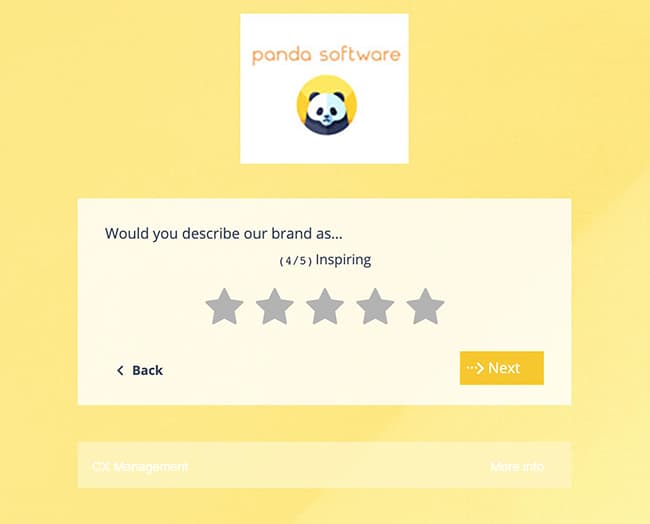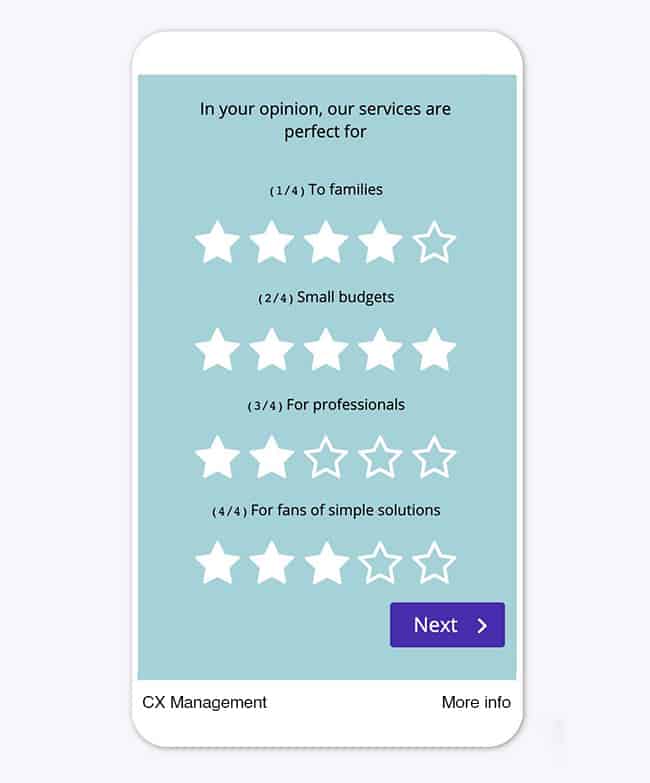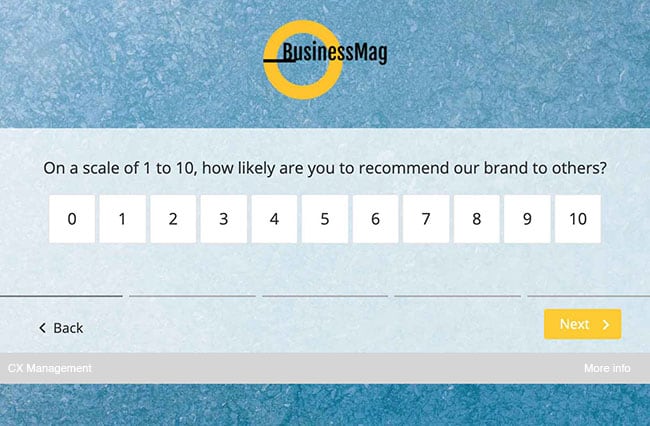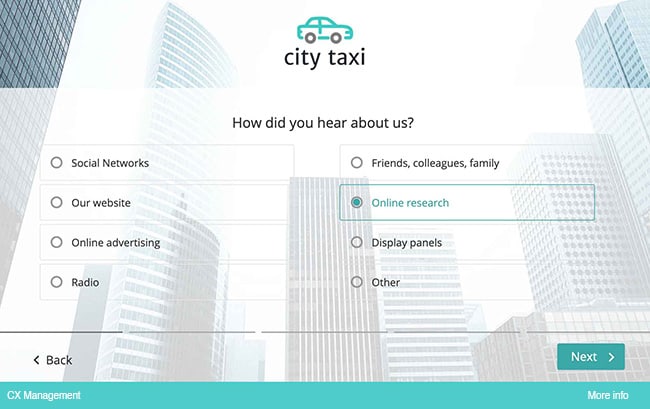It is important to have a clear vision of your brand awareness and positioning on the market. So, how do achieve this? If you’re a regular SKEEPERS blog reader, you probably already know… By asking your customers. Listening to the Voice of the Customer is the best and quickest way to find out how consumers...
It is important to have a clear vision of your brand awareness and positioning on the market. So, how do achieve this?
If you’re a regular SKEEPERS blog reader, you probably already know… By asking your customers.
Listening to the Voice of the Customer is the best and quickest way to find out how consumers perceive your brand. This approach can also sometimes reveal a gap between your perception and your customers’ perception.
Here is an example of a ready-to-use survey campaign to measure your brand awareness and positioning.
The Importance of Brand Awareness and Positioning
There are two things to take into account when trying to find out how consumers and customers perceive your brand:
- Brand awareness: Is your brand known or recognised by consumers? Awareness should not be confused with reputation, which refers to customers’ opinion of the brand. Awareness goes hand in hand with “popularity”.
- Brand positioning, i.e., the position on the market that your brand occupies in the minds of consumers. One parameter that defines brand positioning is market range: is your brand perceived as high-end, mid-range, or low-end? Brand positioning also includes lots of other aspects, some immaterial, as explained below.
Better understanding your brand’s level of awareness (popularity) and positioning will help you:
- Align the way your company perceives itself (or wants to be perceived) with the way it is actually perceived by customers and consumers.
- Identify your brand’s strengths, anything that generates or is likely to generate brand preference (and that you may not have noticed before).
A Ready-to-Use Campaign to Measure Your Brand Awareness and Positioning
We’ve created an example of a ready-to-use campaign to measure both your brand awareness and positioning. You are free to adapt it, of course. Our examples aim to give you an idea of what questions and formats you could use.
Question 1 – “Would you describe our brand as…”
This question is perfect for finding out how your customers (and by extension, consumers or target customers) understand and perceive your brand.
We suggest providing respondents with four or five adjectives and to ask them to score each one. Here are our adjectives: simple, innovative, expert, inspiring, responsible. Feel free to choose other ones!

You can also change the way the question is phrased. For example: “Which adjectives do you think best describe our brand?”.
Question 2 – Which character best reflects your last experience with our brand?
This question is a bit more fun. The idea is to ask the customer to associate their experience with a well-known character or figure. With CX Management, you can use pictures when displaying your answer options.
Here are a few examples:
- Christopher Columbus (= “I didn’t find everything I was looking for”).
- Indiana Jones (= “My customer experience was quite an adventure”).
- Tinkerbell (= “Everything appeared like magic”).
Feel free to change these examples or to add new ones. Be creative!
Question 3 to know brand awareness and positioning – In your opinion, our products/services are perfect for…
This question will help you assess your customers’ perception of your brand’s target and to therefore identify your target clientele and customer types… from the customers’ point of view. Your target clientele is an integral part of brand positioning.

You can use a matrix with a scoring scale for each answer here too. Here are a few examples: for families, for people on a tight budget, for big spenders, for people who like simple solutions.
Question 4 – Net Promoter Score (NPS)
The Net Promoter Score enables you to measure the positive or negative perception your customers have of your brand. We think that it is interesting to include an NPS question in a survey about brand perception, even if NPS doesn’t measure positioning or awareness. To find out more about this indicator and its importance, read our KPIs guide.
The Net Promoter Score measures the probability that your customers will recommend you to others. It is an indicator of recommendation and, indirectly, of customer satisfaction.
Here is a classic NPS question:
“On a scale of 1 to 10, how likely are you to recommend our brand to others? (NPS)”.

Question 5 – “How did you hear about us?”
This question will enable you to find out how your customers discovered and heard about you. It is useful to identify your best acquisition channels and to measure your awareness levers.
Your answer options should include all your acquisition channels. For example: social media, word of mouth (friends, colleagues, family), our website, online search, online ad, display banners, radio, other.

We recommend adding “other”, because there may be acquisition channels that you’re not aware of, or that are more effective than you think. In this case, ask the respondent to specify which channel they are referring to.
Question 6 – “When did you first hear about our brand?”
This question takes a different approach to measuring brand awareness through your customers. The longer a customer has known your brand, the more established it is in the minds of consumers. It is an awareness indicator.
Here are some examples of answers:
- Over the last month
- Over the last 6 months
- Over the last 12 months
- Over the last 3 years
- More than 3 years ago
Question 7 – “How has your perception of our brand changed over the last few months?”
We often say that it’s just as important to know how the customer feels at an exact moment in time, as it is to measure how these feelings change over time. This is particularly important for satisfaction indicators, where it is crucial to monitor changes.
But it is also worth measuring the way your brand perception changes over several months.
Here are three possible answers:
- It hasn’t changed.
- It’s changed for the good.
- It’s changed for the bad.
If the customer says that their perception has changed positively or negatively, we recommend automatically triggering a follow-up question to identify the reasons for this shift.
Question 8 – “Rank the following values, from the one you think is closest to our brand, to the one that is furthest”
In this last question, ask your customers to rank your company’s values in order of preference. Values attached to a brand are immaterial and contribute to your customers’ perception of your brand positioning.
Here are a few examples of values to describe a brand: innovation, satisfaction, trust, quality, customer loyalty, creativity…
All these questions, grouped together in a survey campaign, will help you measure your customer brand perception (positioning + awareness + satisfaction). You can add more too, of course. We hope that these examples will help you create an effective survey campaign! Good luck!








